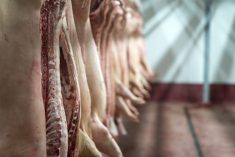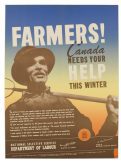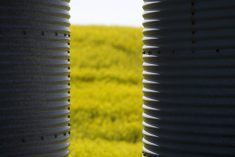By Theopolis Waters
CHICAGO, Dec 31 (Reuters) – Chicago Mercantile Exchange live cattle futures posted their sixth consecutive yearly gain, closing out 2014 up 23.2 percent bolstered by the smallest U.S. herd in 63 years after several years of drought damaged corps.
Of the 19 commodities listed by the ThomsonReuters- Jefferies CRB index, CME live cattle was the second strongest performer for 2014 behind coffee, which was up 50.5 percent.
Several factors are driving cattle. Herds were reduced because of severe drought conditions that pushed feed costs to record highs, especially in 2012, said John Ginzel, an analyst with Chicago-based brokerage firm Linn Group.
Read Also

Women who fed a nation
More than 40,000 young women supported the war effort between the 1940s and early 1950s, helping grow and harvest crops amid labour shortages. They were called Farmerettes.
Expensive corn prompted aggressive herd liquidation, which resulted in record-high beef and cattle prices, he said.
In November, slaughter-ready cattle reached an all-time high of $174 per hundredweight (cwt).
November retail beef hit a record $6.30 per pound, up 6 cents from the month before and 89 cents higher than a year ago, based on U.S. Department of Agriculture data.
In December, Chicago Board of Trade corn was at $3.88 1/8 per bushel, down sharply from its $8.07 3/8 record high in August 2012.
This year’s bumper crop harvest brought down corn prices, but rebuilding the herd is a long process because it takes at least two years to raise a calf to maturity before they are accepted by meat packers such as Tyson Foods and Cargill Inc.
Furthermore, replenishing cattle lost to years of drought requires ranchers to hold back heifers and cows for breeding, rather than sending them to packing plants, thereby prolonging the rebuilding effort, said Ginzel.
Until then, the consequences of high beef and cattle prices will linger throughout the upcoming year, with some of that reduced production being mitigated by heavier cattle weights, he said.
On Wednesday, CME cattle closed the day lower on year-end profit taking.














